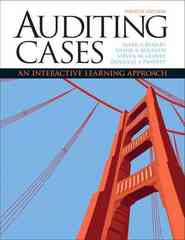Question
What potential consequences can arise from the implementation of a policy wherein a company neglects to account for varying levels of risk when calculating the
What potential consequences can arise from the implementation of a policy wherein a company neglects to account for varying levels of risk when calculating the cost of capital for its diverse projects?
1. Respond with a value added comments to the discussion below
The cost of capital is the cost a company incurs when it raises funds for its projects. It comprises two main components: debt and equity. Debt represents borrowed money that the company must repay with interest, while equity represents the ownership stake of shareholders, who expect a return on their investment.To estimate the cost of capital, companies typically use a weighted average of the cost of debt and the cost of equity. This calculation accounts for the fact that a company usually uses a mix of debt and equity to finance its projects. The formula for estimating the cost of capital is:
Cost of Capital = (Cost of Debt * Weight of Debt) + (Cost of Equity * Weight of Equity)
Different projects carry varying levels of risk. For example, investing in a stable industry like utilities is less risky than investing in a high-tech startup. Failing to adjust for these risk differences can lead to inaccurate estimates of the cost of capital.
When a company does not adjust for risk, it might underestimate the cost of capital. As a result, projects that are riskier than assumed may appear more financially viable than they actually are. This can lead the company to invest in projects that have a higher chance of failure.Example: Imagine a company estimates the cost of capital for all projects without considering risk. It decides to invest in a high-risk, high-reward technology venture, believing it has a low cost of capital. However, due to the high risk, the project may not generate expected returns, leading to financial losses.Conversely, when risk is not properly considered, companies may overestimate the cost of capital for projects with higher perceived risk. This can discourage investment in potentially profitable ventures.Example: Suppose a company overestimates the cost of capital for a project in a slightly risky but emerging market. As a result, it decided not to pursue the project, missing out on significant growth opportunities in that market.
In conclusion, when a company fails to adjust for differences in risk when estimating the cost of capital, it can make poor investment decisions. This can result in a suboptimal project portfolio, financial losses, and missed opportunities for growth and profitability.
2. Respond with a value added comments to the discussion below
Failing to adjust for differences in risk when estimating the cost of capital for various projects can have several significant effects on a company:
Inaccurate Investment Decision-Making: When a company does not account for variations in risk among its projects, it may make investment decisions that do not align with its risk tolerance or financial goals. This can lead to overinvestment in high-risk projects or underinvestment in potentially profitable, lower-risk projects. Inaccurate cost of capital estimates can result in misallocated resources (Stulz, 2009).
Reduced Profitability: Projects with higher inherent risk should typically have a higher required rate of return (cost of capital) to compensate investors for taking on that risk. If the company uses a single, uniform cost of capital for all projects, it may end up accepting projects with insufficient returns to justify their risk levels. This can lead to lower profitability and diminished shareholder value (CFI Team, 2023).
Difficulty in Raising Capital: Investors and lenders often assess the risk associated with a company's projects before providing funding. Failing to adjust for risk can lead to a disconnect between the company's perceived risk and the expectations of external stakeholders. This may result in higher financing costs or difficulties in securing funding for future projects.
Misleading Financial Reporting: Financial reports and performance metrics may not accurately reflect the underlying risks in the company's operations. This can mislead investors and analysts, potentially damaging the company's reputation and stock price (Bracker, Lin, & Pursley, 2018).
Erosion of Trust: Consistently using an inappropriate cost of capital can erode trust with investors, as they may perceive the company as not being diligent in its financial management. This can lead to a loss of investor confidence and reduced access to capital markets.
Legal and Regulatory Issues: In some cases, using an inappropriate cost of capital, especially if it results in misleading financial statements, can lead to legal and regulatory challenges. Authorities may investigate the company for potential violations of securities laws or accounting standards.
Operational Consequences: Investing in projects with inadequate returns can strain the company's financial resources, affecting its ability to meet debt obligations, pay dividends, or reinvest in other opportunities. This can have cascading effects on the company's operations and strategic plans (Botosan et al., 2004).
To mitigate these effects, it is essential for companies to employ a rigorous and flexible approach to estimating the cost of capital that considers the specific risk profiles of each project. This involves adjusting the required rate of return to reflect the project's unique risk factors, such as market risk, industry risk, and project-specific risks. By doing so, a company can make more informed investment decisions, optimize its capital allocation, and maintain the confidence of its stakeholders.
Step by Step Solution
There are 3 Steps involved in it
Step: 1
1 Valueadded comments for the first discussion While the formula for estimating the cost of capital ...
Get Instant Access to Expert-Tailored Solutions
See step-by-step solutions with expert insights and AI powered tools for academic success
Step: 2

Step: 3

Ace Your Homework with AI
Get the answers you need in no time with our AI-driven, step-by-step assistance
Get Started


